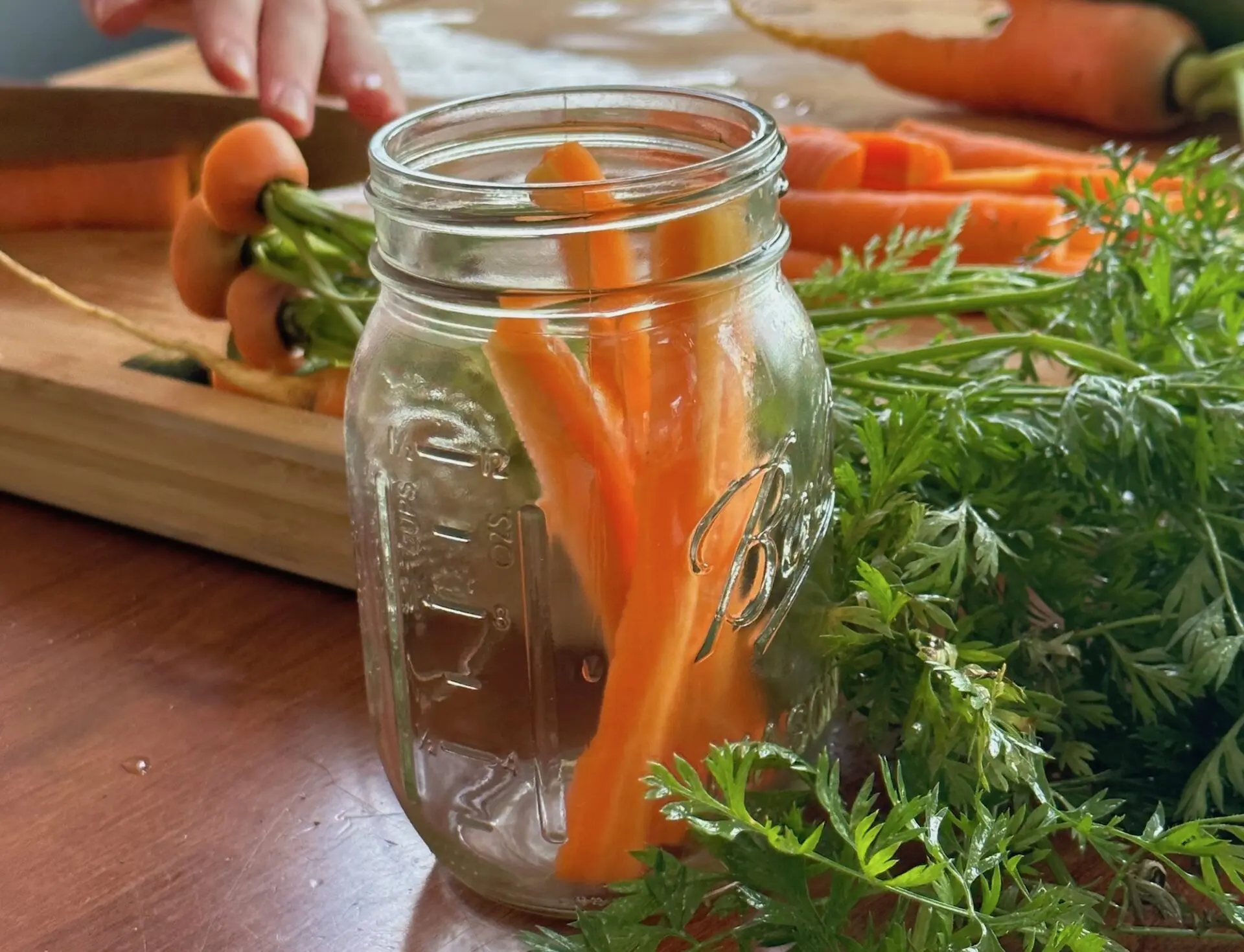Introduction
It’s the middle of summer and we hope you’re enjoying bountiful homegrown harvests! However, sometimes it can be challenging to keep up with eating everything fresh from the garden. If you’re tired of making endless tomato sauce or loaves of zucchini bread, try these 10 ways to preserve your produce and enjoy the fresh flavors of summer all year long:
1. Freezing
Freezing is ideal for preserving the fresh taste and texture of vegetables like peas, green beans, and leafy greens like spinach or kale. For best results, blanch vegetables before freezing them to retain their color and nutrients. Store in airtight freezer bags or containers for a quick addition to a weeknight meal.
2. Quick Pickling
You don’t need a lot of equipment or time to make quick pickles – also called “refrigerator pickles.” You can quick-pickle vegetables like cucumbers, carrots, and radishes using vinegar, water, sugar, and salt. We have a full tutorial in our Recipe Index! Store quick pickles in the refrigerator for a tangy, crunchy snack – they won’t last as long as fermented or canned vegetables.
3. Fermentation
You can preserve vegetables for longer by fermenting them, adding beneficial probiotics to your diet. Simple recipes like sauerkraut and kimchi require just salt, vegetables, and time. They’re also a unique way to add more flavor to your home-cooked meals.

4. Canning
Traditional canning is perfect for long-term storage of high-acid vegetables like tomatoes and pickles, as well as low-acid vegetables using a pressure canner. Follow safe canning guidelines to prevent spoilage and enjoy your produce year-round.
5. Jam and Jelly Making
If you grow berries at home, you can turn fruit into delicious jams and jellies using pectin, sugar, and lemon juice. Try Backyard Eats founder Chris’ favorite blackberry jam recipe today!

6. Dehydrating Vegetables
Dehydrating is a convenient way to preserve vegetables without taking up a lot of space in your freezer. Dehydrating uses low heat to slowly dry out food over time. You can use a dehydrator or oven to dry vegetables like tomatoes, carrots, and zucchini. Store dried produce in airtight containers for use in soups, stews, and snacks.
7. Herb-Infused Oil
Infusing is a unique way to capture the flavors of herbs by steeping them in oil. These flavored oils will elevate any meal! Place clean, dry herbs or garlic in a bottle, fill with oil, and let sit for a few weeks. Use in salad dressings, marinades, and more
Please note that if not properly prepared or stored, infused oils can develop botulism which is extremely dangerous for human health. You can learn more on the PennState Extension website.

8. Pesto and Herb Paste
Pesto is a classic way to use up a lot of basil at once – but it can be made with other herbs as well, like our garlic scape pesto. Blend herbs like basil, parsley, and cilantro with olive oil, garlic, and nuts to make pesto that freezes easily into cubes for easy portioning and long-term storage.
9. Herb Butter
You can also preserve the fresh flavors of herbs by mixing them into softened butter. Roll the herb butter into logs, wrap in plastic wrap, and freeze. Use for cooking meat, potatoes, or vegetables – or simply spreading on fresh bread/

10. Hang-Drying Herbs
If you’re not sure how you want to use your herbs yet, or you just want to refill your spice cabinet, you can hang-dry them for later use. This is a slower but easier way to dry herbs than dehydrating. It works best for hardy herbs such as rosemary, thyme, and oregano – not tender herbs like cilantro or dill. Hang small bunches in a well-ventilated, dark and dry area until fully dried. Read this blog post to learn more.
Do you have a recipe that you’d like to change with our community? Click here to share your recipe now!



